
Where We Be
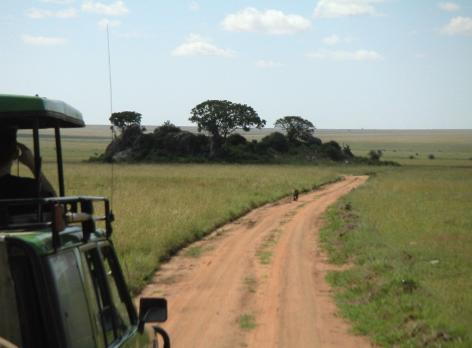
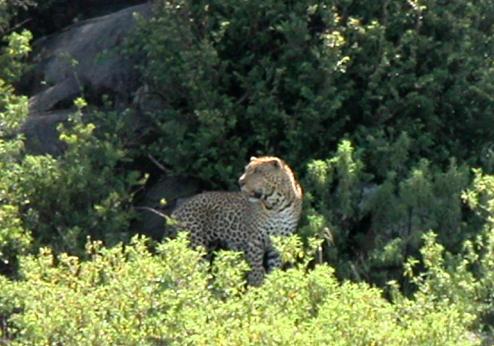
| Serengeti National Park, Tanzania |
| As soon as we stepped out of the vehicle, the wildebeest, zebras, and tommies increased their distance dramatically, forming an enormous circle around us |
| The grazing wildebeest stretched for mile after incredible mile. Amazingly, all the female wildebeest give birth during the same two-week period, thus glutting the market with prey animals. The result is that four out of five baby wildebeest survive if born during this window, versus only half born outside it. |
| The wildebeest form columns when they're on the move. The wildebeest birthing hadn't happened yet, but we saw hundreds of baby Thompson's gazelles -- and they were fast! Only a few days old, they were already able to keep up with their parents. |
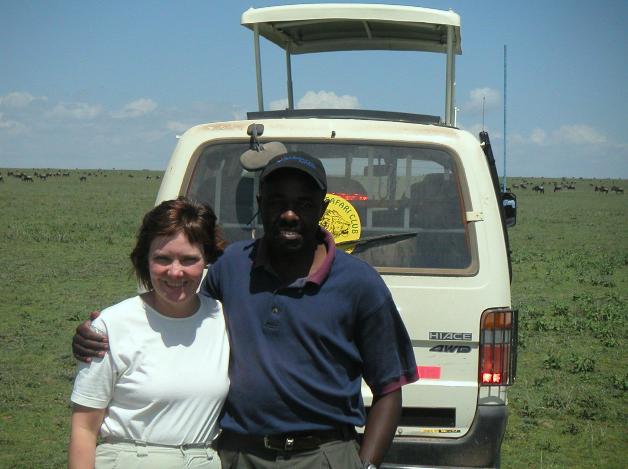
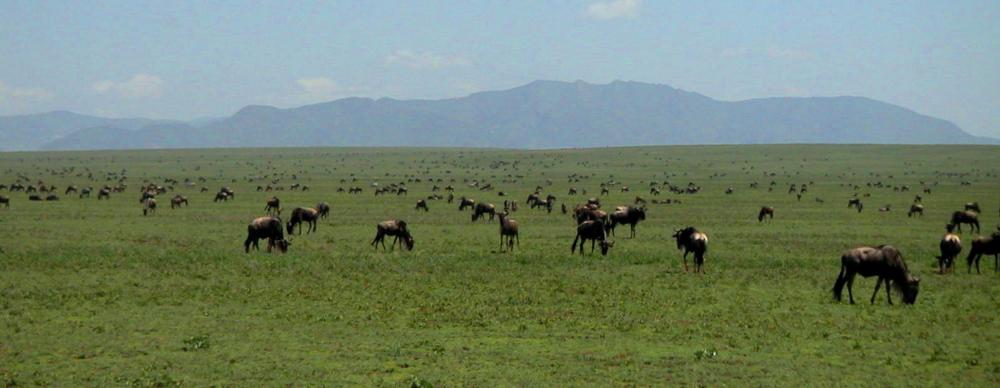
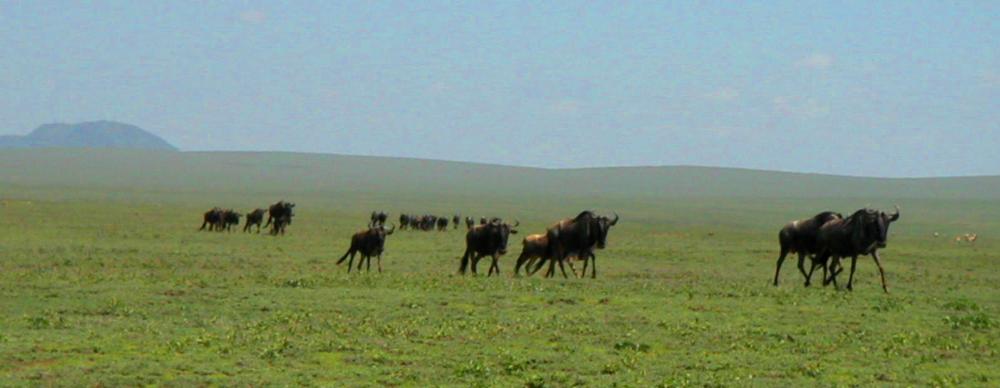
As we drove towards Serengeti National Park,
we passed right through the midst of the
wildebeest migration making its slow march
northward. It's estimated some 3 million large
animals roam the Serengeti plains -- wildebeest,
zebra, tommies, Grant’s gazelle -- stretching for
miles and miles in all directions. This is the
largest terrestrial mammal migration in the
world, and we felt privileged to see it firsthand.
It's no wonder this is considered one of the
Seven Natural Wonders of Africa -- and one of
the ten natural travel wonders of the world.
Since we were still in Ngorogoro Conservation
Area, our guide was able to take us off-road
through a significant concentration of animals.
Tommies and wildebeest scattered before our
vehicle. What an exhilarating sight! We poked
our heads up through the pop-up, felt the
breeze on our faces, and stared in amazement
as hundreds of animals ran before us. At one
point our guide stopped the van, and as soon
as we stepped out, the wildebeest, zebra, and
tommies increased their distance dramatically.
Within seconds they had made a wide circle
around us. The terrain was empty for fifty yards
in every direction and chock-full of animals
beyond that. It felt like we had the plague!
we passed right through the midst of the
wildebeest migration making its slow march
northward. It's estimated some 3 million large
animals roam the Serengeti plains -- wildebeest,
zebra, tommies, Grant’s gazelle -- stretching for
miles and miles in all directions. This is the
largest terrestrial mammal migration in the
world, and we felt privileged to see it firsthand.
It's no wonder this is considered one of the
Seven Natural Wonders of Africa -- and one of
the ten natural travel wonders of the world.
Since we were still in Ngorogoro Conservation
Area, our guide was able to take us off-road
through a significant concentration of animals.
Tommies and wildebeest scattered before our
vehicle. What an exhilarating sight! We poked
our heads up through the pop-up, felt the
breeze on our faces, and stared in amazement
as hundreds of animals ran before us. At one
point our guide stopped the van, and as soon
as we stepped out, the wildebeest, zebra, and
tommies increased their distance dramatically.
Within seconds they had made a wide circle
around us. The terrain was empty for fifty yards
in every direction and chock-full of animals
beyond that. It felt like we had the plague!
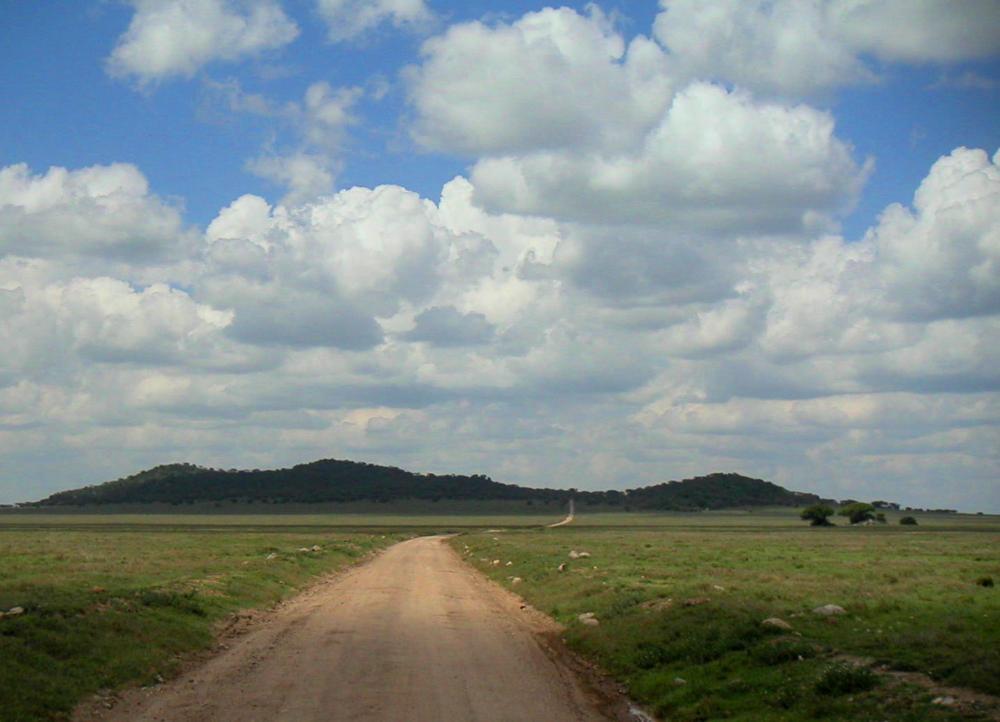
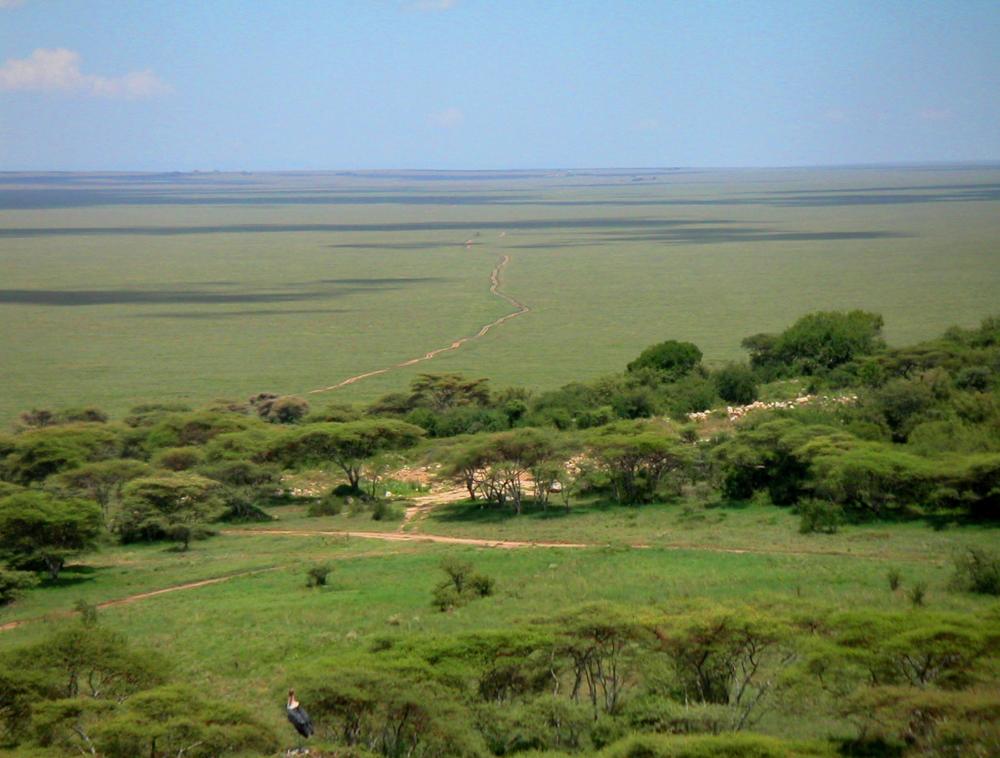

| The further north we drove, the less wildebeest we saw. Eventually we were only passing scattered clumps of tommies and Grant’s gazelle...and then nothing. The plains were suddenly bare as far as the eye could see. We had passed the northern edge of the migration. The only animals we saw for the next ten miles to Naabi Gate (southern entrance to Serengeti National Park) were birds. |
| At Naabi Gate we ate lunch and took a brief nature walk up a hillside offering sweeping views of the treeless plains beyond. The aptly named Serengeti ("endless plains") spans 30,000 sq km (12,000 sq mi) and is contiguous with Kenya's Masai Mara. |
| Seronera Wildlife Lodge is architecturally striking -- it is built right in the midst of a kopje and incorporates the kopje rock outcroppings into the wooden beam structure. A lovely verandah offers indoor and outdoor seating. |
| The lodge is very close to nature -- there are no fences and no effort to keep animals away. From the verandah we saw impala, waterbuck, giraffe, vervet monkeys, and baboons. We also spotted dwarf mongoose, bats, and even a spitting cobra on the premises! |
| The northward migration was still south of us, but closer to our lodge there were thankfully still animals. We began spotting herds of impala (shown above), topi, and hartebeest. These populations are resident year-round because of the Seronera River, which forms a U-shape around the Seronera Wildlife Lodge. |
| Next day we went on two game drives, staying close to the lodge |
| We also saw astonishing numbers of beautifully colored birds during our safari, including these superb starlings in the lodge's bird bath and a lilac breasted roller on a high branch |
| The leopard padded down the dirt road, away from the squawking guineafowl. “I hope you know this is not normal,” Fideles said, a broad grin on his face. “We know!” we replied. Seeing the normally secretive leopard active in the middle of the day is rare. |
| We drove to several kopjes in hopes of spotting a predator -- and were rewarded with our first and only leopard of the trip! He was resting on a rock in the shade of an umbrella acacia. All of a sudden, apparently annoyed by a guineafowl that kept squawking at him, he leapt down from the rock, passed close to our vehicle, and followed the dirt track toward another kopje in the distance. |
| That afternoon we drove north of the lodge to a large hippo pool. We sat for half an hour watching some thirty hippo bathing, grunting, and feeding. |
| At one point two males engaged in a dominance battle -- and this little hippo got caught up in the frenzy! Things quickly settled down, though, and he was fine. |
| It felt a little scary being so close to such enormous animals. Fideles said it was safe since the hippo were in the water where they felt protected. |
| We also saw a hippo grazing on land -- another first for us |
| The closest hippo kept eyeing us intently, then submerging, then reappearing a foot or two closer each time -- yikes! |
| As dusk fell, we headed back out to the verandah and spotted giraffe close to the lodge, munching on acacia leaves. Several young giraffe startled and ran. What a glorious place! |
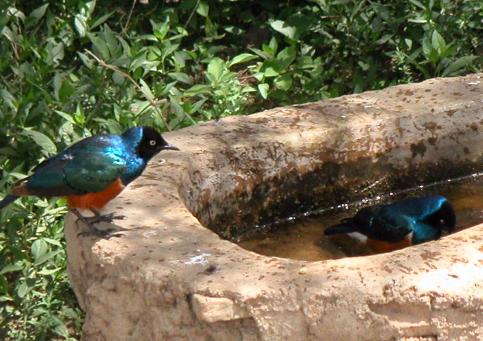
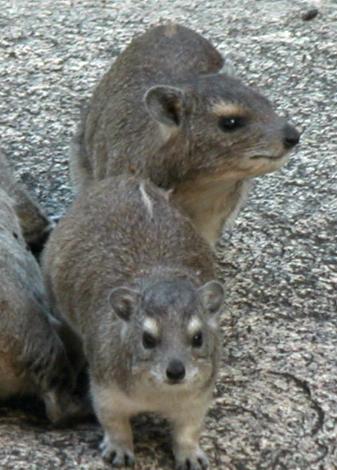
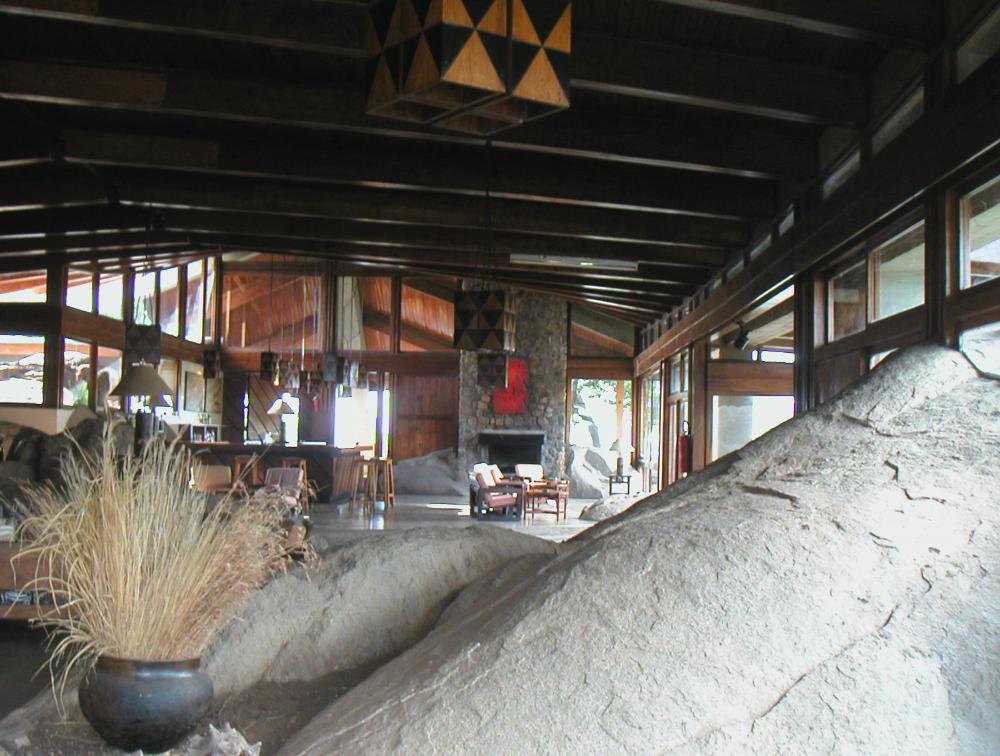
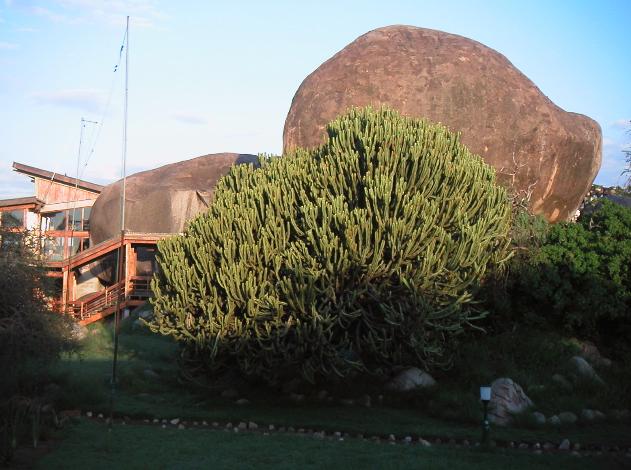
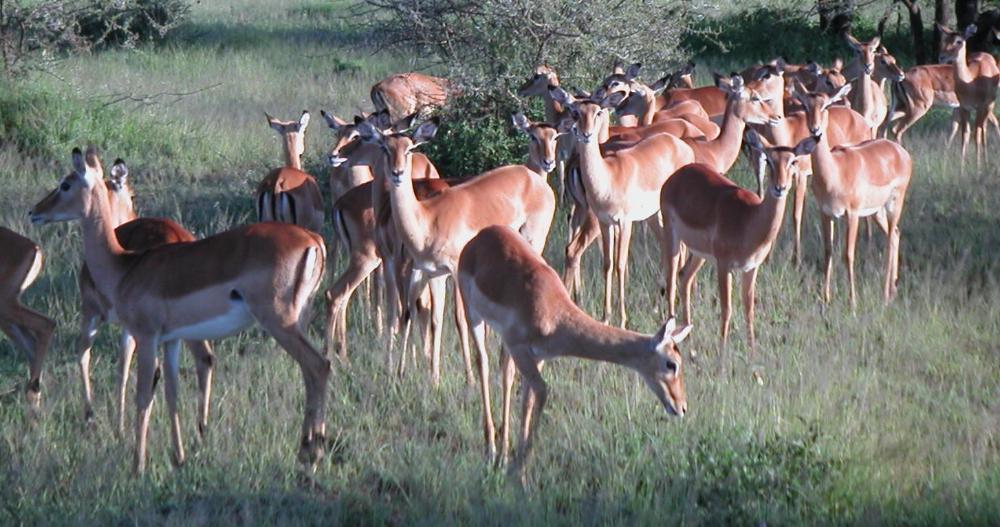
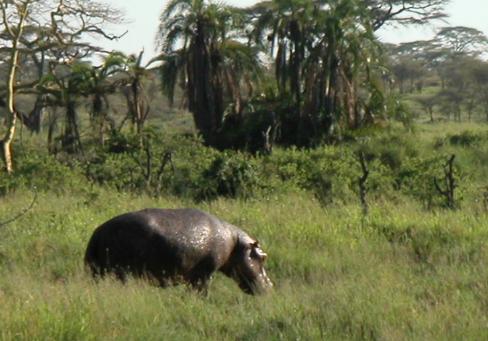
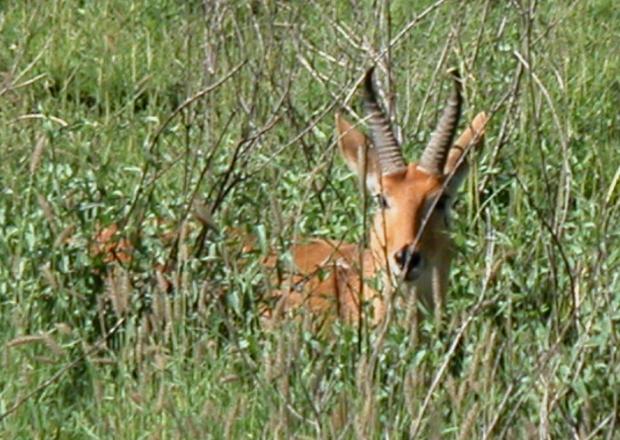
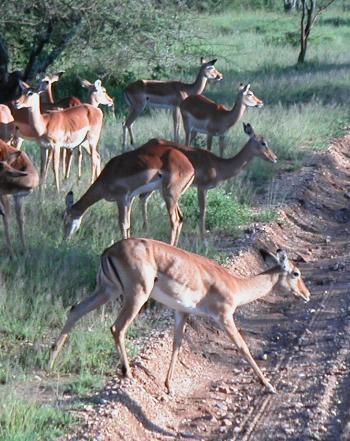
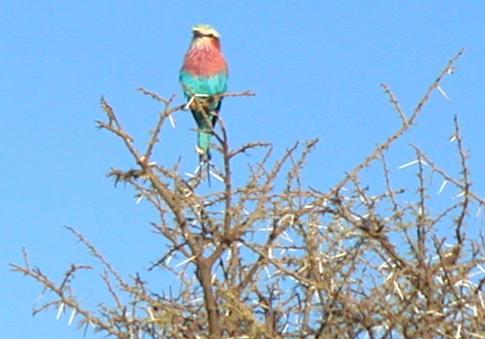
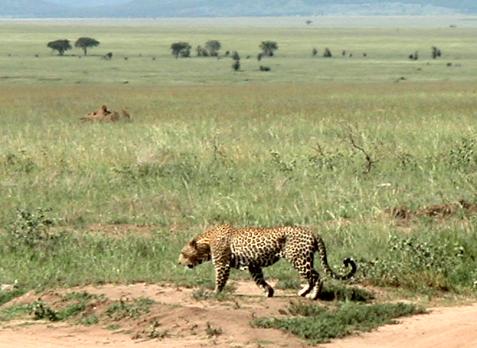
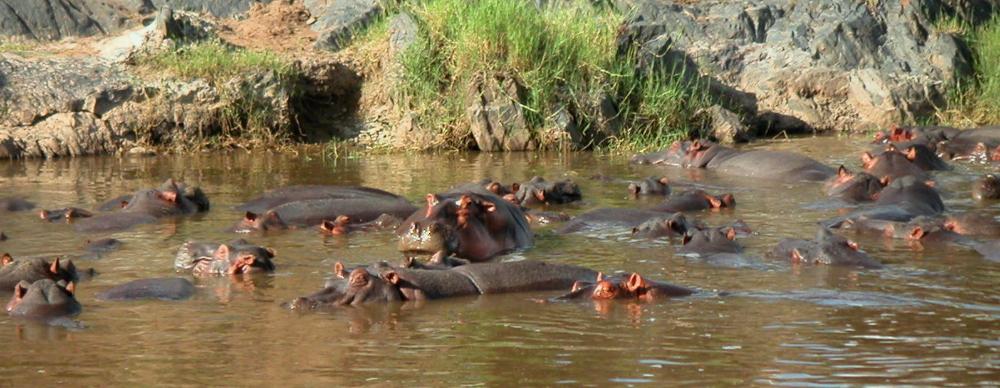
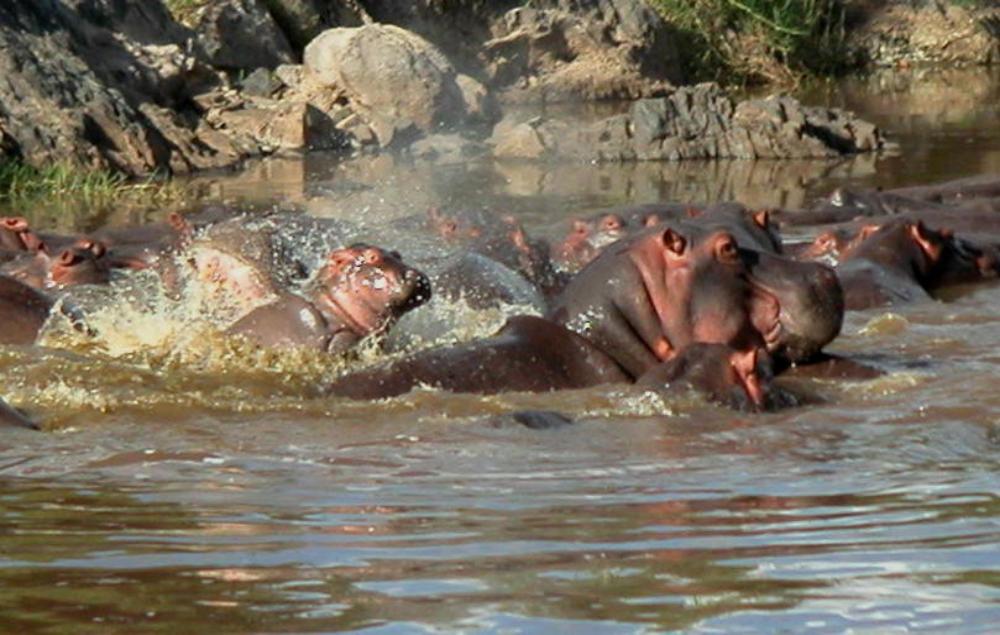
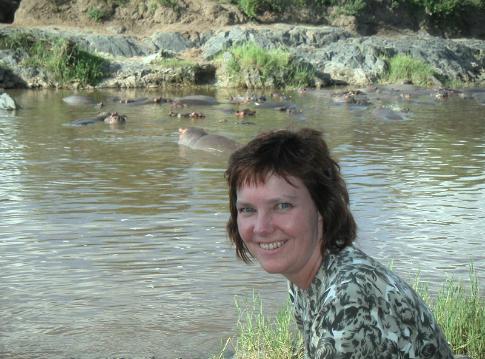
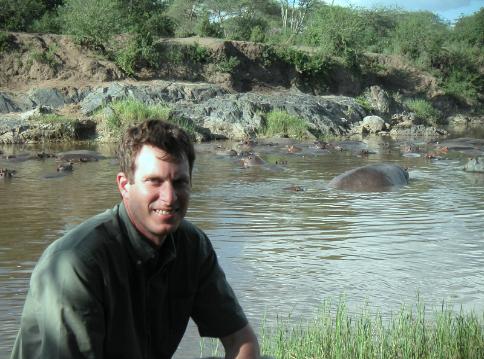
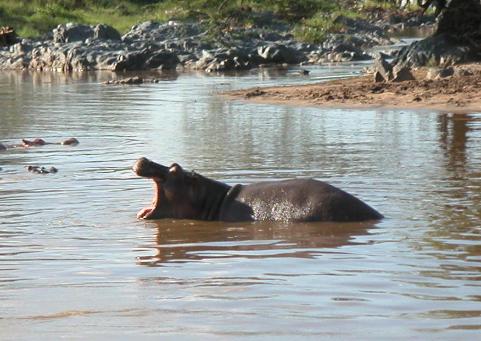
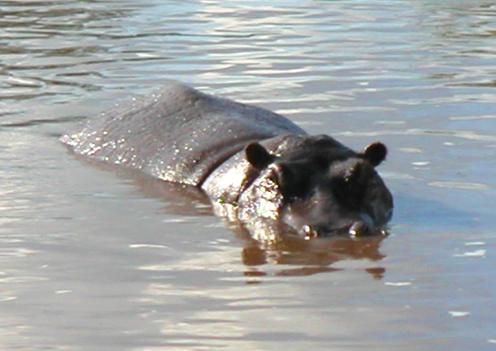
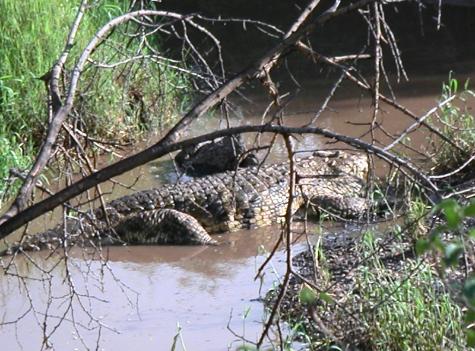
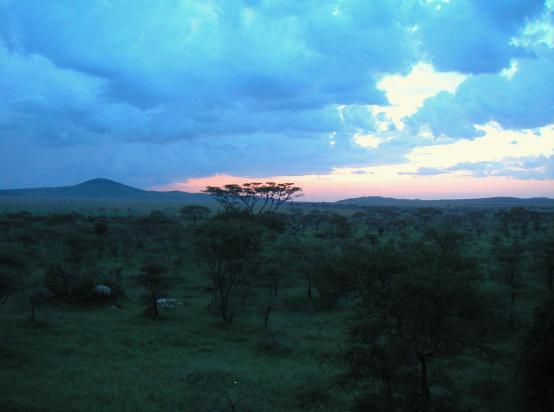

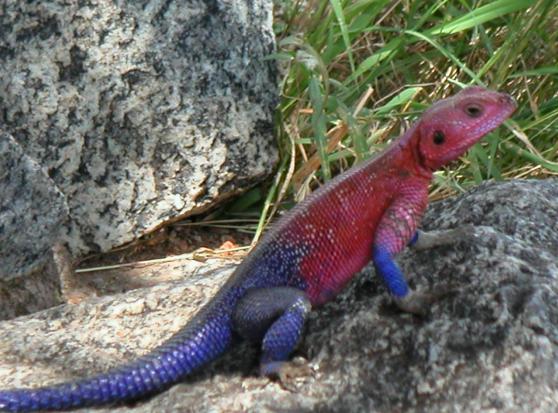
| Two-toned agama lizards sunned themselves on the rocks near where we had lunch |
| Is this my favorite trip ever? Yes! I think I could go on safariing forever. |
| We spied this waterbuck hiding in the tall grass |
| Rock hyrax were all over the place; you couldn’t help seeing these cute marmot-like creatures scurrying over the rocks on your way to and from meals |
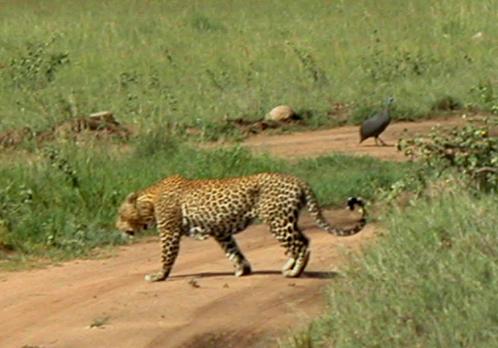
| We walked to a nearby river overlook -- and saw this enormous 12-foot-long Nile crocodile sunning himself. Double yikes! |
| Either a dominance display or a yawn! |